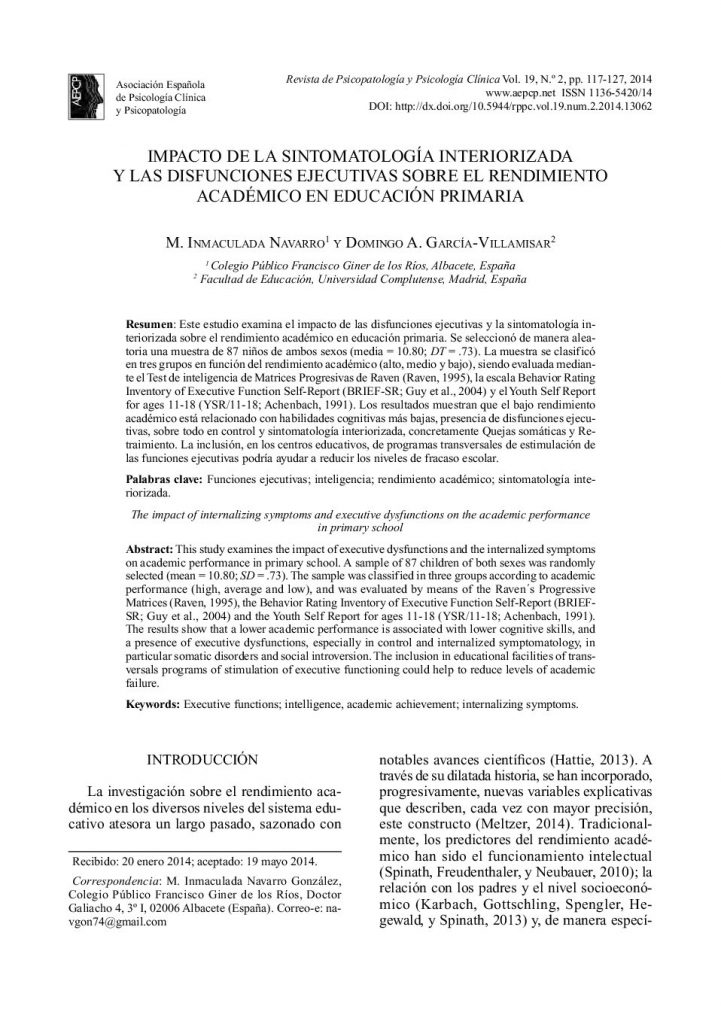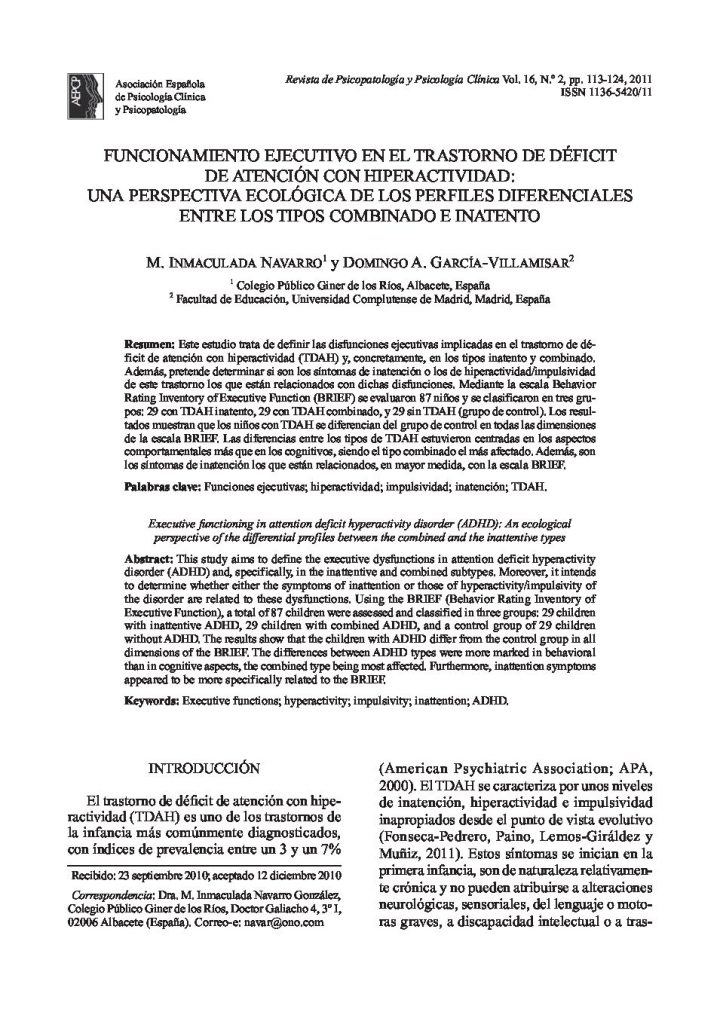Impacto de la sintomatología interiorizada y de las disfunciones ejecutivas en el rendimiento académico en educación primaria.

- Predicción del burnout en los docentes: Papel de los factores organizacionales, personales y sociodemográficos.
- Maltrato físico y emocional durante la infancia y conducta suicida en el adulto.
- Directed forgetting in major depression.
- Impacto de la sintomatología interiorizada y de las disfunciones ejecutivas en el rendimiento académico en educación primaria.
- Análisis de la emotividad negativa en mujeres víctimas de violencia de pareja: La culpa y la ira.
- Patrón asociado a la inasistencia a la primera consulta de un centro de salud mental.
This study examines the impact of executive dysfunctions and the internalized symptoms on academic performance in primary school. A sample of 87 children of both sexes was randomly selected (mean = 10.80; SD = .73). The sample was classified in three groups according to academic performance (high, average and low), and was evaluated by means of the Raven´s Progressive Matrices (Raven, 1995), the Behavior Rating Inventory of Executive Function Self-Report (BRIEFSR; Guy et al., 2004) and the Youth Self Report for ages 11-18 (YSR/11-18; Achenbach, 1991). The results show that a lower academic performance is associated with lower cognitive skills, and a presence of executive dysfunctions, especially in control and internalized symptomatology, in particular somatic disorders and social introversion. The inclusion in educational facilities of transversals programs of stimulation of executive functioning could help to reduce levels of academic failure.
Este estudio examina el impacto de las disfunciones ejecutivas y la sintomatología interiorizada sobre el rendimiento académico en educación primaria. Se seleccionó de manera aleatoria una muestra de 87 niños de ambos sexos (media = 10.80; DT = .73). La muestra se clasificó en tres grupos en función del rendimiento académico (alto, medio y bajo), siendo evaluada mediante el Test de inteligencia de Matrices Progresivas de Raven (Raven, 1995), la escala Behavior Rating Inventory of Executive Function Self-Report (BRIEF-SR; Guy et al., 2004) y el Youth Self Report for ages 11-18 (YSR/11-18; Achenbach, 1991). Los resultados muestran que el bajo rendimiento académico está relacionado con habilidades cognitivas más bajas, presencia de disfunciones ejecutivas, sobre todo en control y sintomatología interiorizada, concretamente Quejas somáticas y Retraimiento. La inclusión, en los centros educativos, de programas transversales de estimulación de las funciones ejecutivas podría ayudar a reducir los niveles de fracaso escolar.




